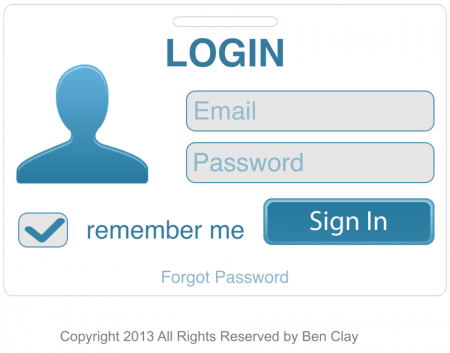Felista Gor charts out the top ten steps an organization can employ to better secure their data and protect their business
Cybersecurity is becoming a significant business concern. Organizations should therefore have plans in place to prepare for, deal with, and recover from a security breach.
No single security appliance or piece of technology will solve all network security needs in an organization. However, organizations can set in place measures to secure their assets from breaches and hackers.
Sify Technologies – Security Services
Here is our Information Technology security best practice checklist that you can rely on to effectively secure an organization’s system.
1. Perform a risk assessment
Risk assessments should be done bi-annually, annually, or quarterly.
Risk assessment is the process of identifying, assessing, and implementing key security controls in applications. It reveals security defects and vulnerabilities of the organization’s system to help manage and mitigate the risks.
The four steps of a successful security risk assessment model:
- Identification: Identify the critical assets of the organization like data and infrastructure. Next, diagnose and understand the value of the organization’s assets and create a risk profile for each.
- Assessment: Assess identified risks for the critical assets. Determine how to effectively allocate resources towards risk mitigation and analyze the correlation between assets, threats, vulnerabilities, and mitigation controls.
- Mitigation: Define a mitigation approach and enforce security controls at each risk.
- Prevention: Implement tools and processes to minimize threats and vulnerabilities from occurring in your organization’s resources.
2. Create a security policy
Create a security policy that clearly outlines the organization’s rules, job roles and responsibilities, and expectations for employees.
A security policy is a document that states in writing how the organization plans to protect physical and IT assets. The document should include a plan for educating employees about protecting the organization’s physical and digital assets, how the security measures will be carried out and enforced, and procedures for evaluating the policy to make corrections.
Other key elements of the security policy include a statement of purpose, an objective statement, a data statement of how organizational data is to be handled, and a data classification statement that divides data into categories of sensitivity.
3. Physical security measures
Restrict access to networking closets and server locations, as well as fire suppression.
Physical security measures protect the physical assets of an organization, including buildings, vehicles, inventory, and machines. Protecting physical infrastructure is important as it houses the organizations’ data.
Therefore, ensure that there are authorized personnel who access, move, and handle physical assets. For example, organizations can implement a biometric verification system that limits access to rooms by verifying personnel who are authorized to enter.
4. Perform and test backups
Back up information regularly and test data recovery from backups.
Having full and current backups of all your data can be a lifesaver. Employ a backup solution that automatically and continuously backs up critical data and system configurations. Test backups to assess the effectiveness of the data and verify that the data is available for recovery in case of disaster.
5. Maintain security patches and updates
Regularly update server, client, and network device operating systems and programs.
Enable automatic system updates whenever possible. Replace all unsupported operating systems, applications, and hardware. Test and deploy patches quickly.
6. Employ access controls
Configure user roles and privilege levels as well as strong user authentication.
Access control is a selective restriction of access to a place or resource. This method guarantees that users are who they say they are and that they have the appropriate access to company data.
The organization can also implement multi-factor authentication where employees are granted access to the organization’s data only after successfully presenting two or more pieces of evidence to an authentication mechanism. Multi-factor authentication strengthens access security.
7. Regularly test incident reports
Employ an incident response team and test emergency response scenarios.
A cyber incident response plan prepares an organization to prepare for and respond to security incidents, by documenting roles and responsibilities, risk assessment and escalation procedures, and notification requirements. The response plan enables a prompt, consistent, and appropriate response to both suspected and confirmed security incidents.
Regularly testing incident reports will increase an organization’s testing effectiveness and enable it to have more frequent opportunities to identify components of the plan that have gone out of date.
8. Implement a network monitoring, analytics, and management tool
Choose a security monitoring solution that integrates with other technologies.
Network monitoring tools constantly track, analyze, and report the availability, health, and performance of networks.
Implementing network monitoring, analytics, and management tool will enable the organization to stay ahead of potential issues that may cause IT outages, identify security threats, effectively track the source of problems, and find IT outages that could cause bottlenecks.
9. Implement network security devices
Use next-generation routers, firewalls, and other security appliances.
Using proper network security devices can help the organization defend its network. If an organization’s data and infrastructure is not properly secured, they could be exploited.
Network security devices are either physical or virtualized and may include firewalls, antivirus, intrusion detection systems, and content filtering devices.
10. Educate users
People can be your biggest security risk or your strongest security defense.
No single security appliance or piece of technology will solve all network security needs in an organization. That is why it is best to use a people-centric approach for mitigating human-connected risks.
Educate your employees on threats and how to supply feedback about malicious activity. In addition, carefully protect all access to your corporate assets and closely monitor all sessions where employees work with sensitive data.
In case you missed:
- None Found











2 Comments
Good stuff. Can you give examples, some real-life names etc. The content is good though.
Well done. Please provide some specifics, such as names of people and places. But the material itself is fine.